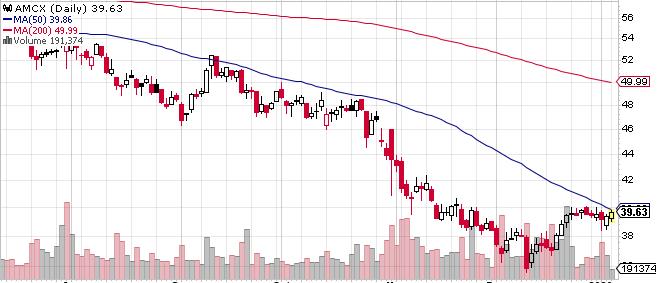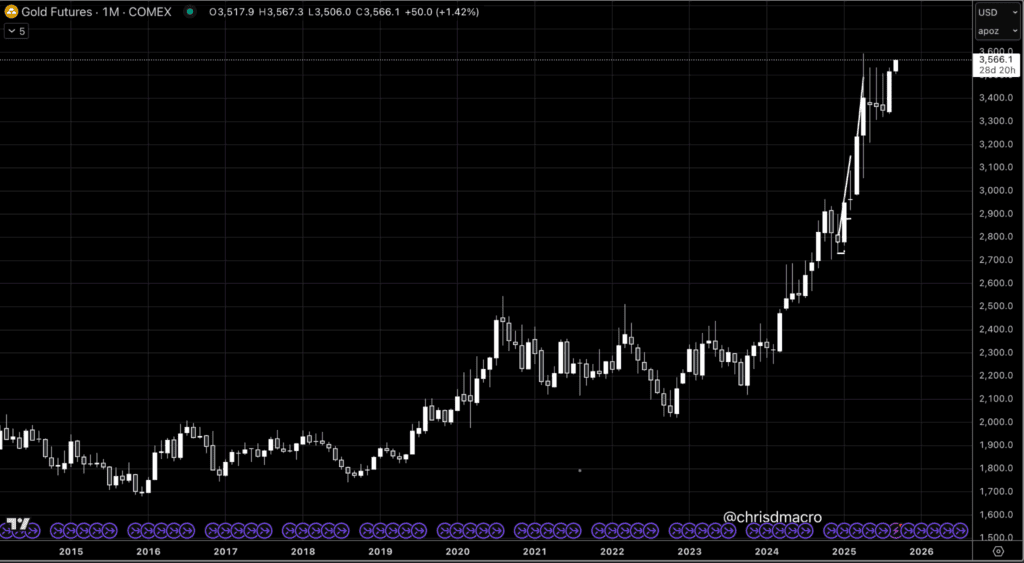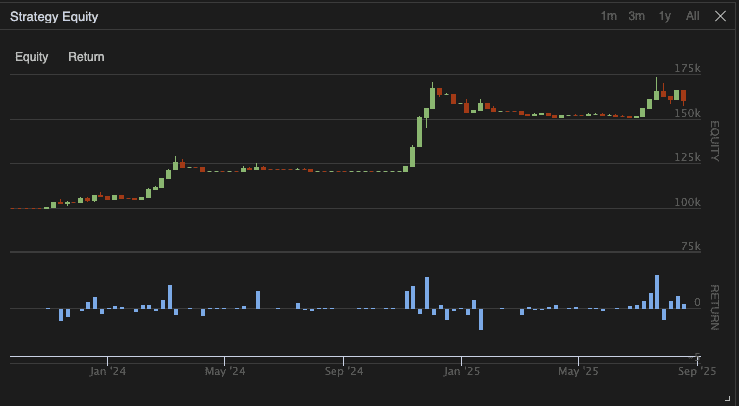I went 3-for-4 in my weekend football picks. Not bad. Now if only I put some money on those convictions! As a Redskins fan, I’m a big Kirk Cousins guy. Would love to see him win a Superbowl.
Let’s get to a housekeeping note. I’ll be in Charlotte, NC until Jan. 24th. If you’re a Value Hive reader that lives in the Charlotte area, please reach out. I love connecting with other like-minded investors.
Check out our latest podcast episode: Joe Boskovich & Brian Laks, Old West Capital Management
As of Monday morning the podcast reached 500 total plays! Thanks for making this a great experience. I’m having a ton of fun and look forward to our future guests.
Here’s what we got in store this week:
-
- Akre Capital on (Not) Selling
- Aswath Damodaran’s Big Delusion
- Yet Another Media Guide Pt. 4
- Value Investing w/ Options
- JPM’s Guide To Markets
Let’s get to it!
—
January 08, 2020
Nevada Cashing In On Bets: Sports betting is exploding across the US. The relaxation of regulations have created an ideal environment for speculators and fans to place bets on various games. One state that’s loving this? Nevada.
The Gambling Capital of the US took $614M in bets in November. That beat its previous all-time record by 3%.
Who do you have this weekend? Send me your picks!
___________________________________________________________________________
Investor Spotlight: Chuck Akre & The Art of (Not) Selling
Chuck Akre is a tremendous value investor. He’s also a staunch advocate for not selling investments. Holding for the long haul. I found an article from Chuck’s investment website, Akre Capital Management.
The article discusses the importance of not selling. Yet at the same time, the article provided rules for selling. Let’s dive in.
Why You Should Hold On
We know about compound interest. But how often does the concept come into play when thinking about our sell decisions? At Akre Capital, it’s the foundation of their investment process (emphasis mine):
“Our investment philosophy involves concentrating our capital in a small number of what we believe to be growing and competitively advantaged businesses. These kinds of businesses are rare and are only periodically available for purchase at attractive valuations. With that in mind, we do our best to hold on for the long term, so that our capital may compound as the businesses grow.”
A penny doubled every day for a week turns into $1.28. The second week? $163.84.
But holding isn’t easy. In fact it’s the hardest decision we must make. As value investors, it’s (relatively) easy to determine when to buy. There’s an intrinsic value and the current market price.
Yet when we sell, we’re making a bet that the future of this company won’t be as accretive as its past. Put another way, the current price doesn’t hold an ideal risk/reward ratio. This is where the power of holding emerges.
Back to the article … “Holding on means resisting the temptations to sell — and there are many. We tune out politics and macroeconomics. To the surprise of many, neither valuation nor price targets play a role in our sell decisions.”
Rules for Selling
The article dove into some reasons why Akre Capital would sell an investment. This isn’t an exhaustive list, but a guidepost.
Rule #1: Slowing Growth
-
- Akre’s Reasoning: To generate above-average returns over the long term, we believe we must invest in businesses that are growing sustainably at above-average rates. When growth slows, we expect our returns will as well.
Rule #2: Loss of Competitive Advantage
-
- Akre’s Reasoning: “The moat must be dredged every now and then. Failure to do so may cause competitive advantage to weaken or disappear altogether.”
Rule #3: Management Fails Expectations
-
- Akre’s Reasoning: “[A]t some point, we have to make a call, and a new management team that falls short of our expectations might cause us to sell.”
More Akre Resources
If you’re a fan of Akre, you’re going to love these two YouTube videos:
-
- Chuck Akre: Compounding Machine
- Talks at Google: “The Peregrinations of an English Major Trying to Solve the Investment Puzzle”
___________________________________________________________________________
Movers and Shakers: Aswath’s Big Delusion & Pt. 4 of Media Guide
Aswath Damodaran released a great article on Big Market Delusions. In it, he outlines the ingredients necessary for market delusions to form. He provides examples of recent IPOs to confirm those claims.
The Recipe For Market Delusion
Damodaran describes three criteria needed to form market delusions:
1. A Big Market
Large markets heal all business wounds. At least that’s what some people think. Damodaran notes large market examples: dot-com bubble, online advertising and marijuana industries. Each industry had one thing in common. They all described their end markets as very large.
How will cannabis companies make money? No worries, the market is so large it’ll take care of itself. What’s Uber’s plan for monetization? Doesn’t matter. Have you seen their TAM?
Damodaran’s Take: “In each case, the logic of impending change was impeccable, but the extrapolation that the change would lead create huge and profitable markets was made casually.”
2. Overconfidence
Overconfidence is one of the worst sins in the investing game. According to Damodaran, big markets amplify the effect of overconfidence. Why is that? Daniel Kahenman offers three reasons:
-
- Overconfidence is ubiquitous
- Overconfidence metabolizes anchoring biases
- Overconfidence is rooted in our evolutionary DNA
Damodaran’s Take: “Big markets attract entrepreneurs, over confident that their offerings will be winners in these markets, and venture capitalists, over confident in their capacity to pick the winners.”
3. Pricing Game
There’s a difference between value and price. Most venture capitalists (and PE shops) price companies. They don’t value them. In other words, most investors figure out how much similar companies were sold for in the past, and then apply a similar multiple.
They’re not valuing the business’s cash flows. That could be because most of these high-flying companies don’t have positive cash flows.
Damodaran’s Take: “There is no attempt made to flesh out the “huge market” argument, effectively removing any possibility that entrepreneurs or the venture capitalists funding them will be confronted with the implausibility of their assumptions.”
Shared Elements of Market Delusions
We know what it takes to create big, market delusions. But what are some of the shared symptoms of these markets? What can tip us off? Damodaran answers these questions for us.
Here’s the four elements of big market delusions:
Element #1: Big Market Stories
Damodaran’s Take: “In recent years, the big markets have gone from just words to numbers, as young companies point to big total accessible markets (TAM), when seeking higher pricing, often adopting nonsensical notions of what accessible means to get to large numbers.”
Element #2: Blindness to Competition
Damodaran’s Take: “When the big market delusion is in force, entrepreneurs … and investors generally downplay existing competition …”
Here’s the biggest issue with these big market companies. If the market in fact is as large as they say, that must attract competition. Competition drives prices (and margins) lower to arrive at equilibrium.
Element #3: All About Growth
Damodaran’s Take: “When enthusiasm about growth is at its peak, companies focus on growth, often putting business models to the side or even ignoring them completely.”
Bruce Greenwald stresses this idea in almost every lecture. Growth for the sake of growth isn’t good. If that growth doesn’t generate returns above your cost of capital, it’s value destructive.
Element #4: Disconnect from Fundamentals
Damodaran’s Take: “Put simply, the pricing losing its moorings in value, but investors who look at only multiples miss the disconnect.”
A business is worth its future cash-flows discounted back to the present. This doesn’t mean we can’t use multiples in our process. But Damodaran’s right. If we only use multiple analysis, we miss the true underlying value of the company. Multiples don’t pay bondholders. Cash-flows pay bondholders.
Andrew Walker: Free Radicals in Media
Andrew Walker keeps cranking out new parts to his Media Guide. At this point, I’m expecting no less than a 15-part series. Followed soon after by a 12-part mini-series breaking down the length of the series.
In Part 4, Andrew discusses a “free radical” company, AMC Entertainment (AMCX). Let’s head to the blog!
A Cheap Radical Amongst Us
John Malone coined the term ‘free radical’ to a media company that is too small to survive, but offers value as a take-out candidate.
Andrew thinks AMCX is that free radical.
He notes that the company’s cheap on statistical measures (emphasis mine):
“Any discussion of AMCX probably has to start with one obvious point: it is cheap. Really cheap. Revenue, earnings, and free cash flow have grown every year for the past five years. From FY15-FY19, the company will have generated >$4b in unlevered FCF. The company’s EV is currently ~$4.7B. That’s really cheap.”
But here’s the kicker. Andrew doesn’t think AMCX is as cheap as it looks.
One-Trick Pony
AMC relies on The Walking Dead for most of its viewership. It’s not close. Walking Dead related programs account for over 4M viewers. The next closest? Better Call Saul with 1.48M viewers.
Andrews describes this problem, saying, “Their key franchise ratings are declining, and I suspect they are significantly over-earning versus the value their channel currently delivers. Incremental margins are pretty high for a media company; I wouldn’t be surprised to see their fees cut as their next rounds of deals are negotiated, and if that happens AMC could go from looking really cheap to pretty expensive in a hurry.”
Two Reasons To Buy AMCX
According to Andrew, there’s two reasons why investors would buy AMCX:
-
- The company will melt slower than market expectations
- You think AMCX will be acquired by a larger company
The stock’s battering against its 50MA right now. A breakout above that trendline would get me interested in a shorter-term “melt slowly please” trade.
___________________________________________________________________________
Resources of The Week: 1988 Akre Letter & JPM Guide To Markets
Akre’s Investor Letter
If you haven’t noticed, I’ve been on a Chuck Akre kick as of late. That theme continues with this week’s resource: Akre Capital 1988 Investor Letter
The entire letter’s worth the read. Here’s a few of my favorite nuggets:
-
- “Our resulting style in the partnership is to try and find outstanding businesses, to understand their true value, and when the price is reasonable, purchase shares.”
- “The practice of not losing money is significantly advanced by the selection of superior businesses, because as we just pointed out, their royalty keeps on working in spite of general business conditions and isolated poor managerial decisions.”
- “The fewer investment decisions we make, the less exposure we have to making mistakes. Obviously, these decisions that are made must be correct, which is why we spend so much time trying to understand the quality of businesses.”
JPM’s Guide To The Markets Q1 2020
H/T to Alex at Macro Ops for sending out the link to JPM’s Guide To The Markets.
You can check it out here if you’re interested. It’s 71 slides of interesting content.
___________________________________________________________________________
Idea of The Week: Value Investing Through Options
I stumbled upon a 2016 ValueWalk interview with Chris Abraham. Chris runs CVA Investment Management. CVA runs a long-term, all-cap, value oriented investment portfolio. That’s not what’s interesting. What’s interesting is their use of options as insurance float.
How To Create Your Own Float
Chris describes how he creates his own Berkshire-like insurance float:
“If you find a security that is undervalued and has a margin of safety, generally speaking there will be an even bigger mispricing in the options. To profit from this you can sell put spreads or buy call spreads – the former eliminates the tail risk. If you feel comfortable just selling naked puts that will help you generate even more float, but you have to be comfortable buying the stock at the set price if it comes to it.”
Chris’ Investment Process with Options
Chris’ investment process focuses on finding mispricings on the equity side. If there’s a mispricing on the underlying equity, the derivatives could show a wider discrepancy. From the interview:
“Sure, let’s say a stock is trading at $100 and under my valuation I believe it’s worth $130 to $150. If I can sell puts at $85 and collect $8 in premium, a premium that expires in one year, to me that would be very attractive. In this scenario my net buy price, if I were forced to buy, would be $77, otherwise the options will expire and I get to keep the float. In this specific case, assuming I’m buying this competitively advantaged company at a 40-60% discount, I would be ok selling the puts outright and not put spreads because I would be happy to own the stock at $77.”
This is such an interesting strategy, and one that I plan on writing about in more detail. Keep your inboxes open for that article.
___________________________________________________________________________
Tweet of The Week: All The Accounting You Need
The Only Accounting You Ever Need pic.twitter.com/uk1XB64Xxs
— 2020 (@Sparticuszorro) December 29, 2019
That’s all I got for this week. Shoot me an email if you come across something interesting this week at brandon@macro-ops.com.
Tell Your Friends!
Do you love Value Hive?
Tell your friends about us! The greatest compliment we can receive is a referral (although we do accept Chipotle burrito bowls).
Click here to receive The Value Hive Directly To Your Inbox!












